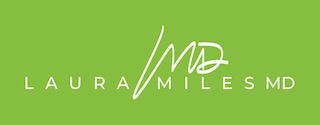I have had so many questions about what kind of exercise I was doing in my story on Instagram last week so wanted to share more information.
First, you know me. I am not the one to sign up for something that is a gimmick so before I jumped into this I did some research. What am I talking about? Electrical muscle stimulation (EMS). I have several past injuries that makes increased weight bearing difficult with a shoulder and knee issue so I was intrigued and wondered if this could help me build more muscle without the extra stress on those joints.
EMS has been around a long time and used in the physical therapy world to help patients who have had injuries regain some muscle strength. In this case a specific pad would be applied to the area of interest and the device sends electronic pulses to your muscles stimulating them to contract. So, if you had a knee injury you could stimulate the muscle around that joint to get stronger while you are healing the actual knee. This is a little like the TENS unit that stimulates nerves used for pain relief but for the muscles. READ ON to learn more about this technique and if this is a good option for you…. (If you missed my video click here to view)
Of course, this spiked a lot of interest in the athletic world on how to increase performance and when you google EMS so many quick fix do-it-yourself devices pop up. What really grabbed my attention was when you look at the science behind this with real studies. First, I found plenty of studies showing that the frequency and quality of current really mattered and many studies of the DYI forms really did nothing. For this reason, several companies with EMS belts were withdrawn from the market. However, using medical grade devices there is an increase in muscular strength and endurance. Several studies showed decreased abdominal circumference with abdominal stimulation. I was particularly impressed with a study looking at elderly with sarcopenia (muscle wasting) and bone loss in people who weren’t exercising. This study showed increases in muscle mass and bone density and they still weren’t exercising! Does this mean you get a carte blanche to go sit on the couch – NO!! However, perhaps it can be an adjunct to your routine.
Side-effects:
The biggest concern about a full body EMS workout is significant breakdown of the muscle and in its’ extreme form this is called rhabdomyolysis (rhabdo). Yes, this condition is as scary as the name so you don’t want to mess around with this. Rhabdo occurs when the muscle breaks down excessively releasing proteins and electrolytes into the blood. A lab test called creatine kinase is one of the markers that spikes. Severe cases can cause kidney failure, heart damage and death so this is a serious issue. This is one reason why this technology is really not DIY. Breakdown of the muscle can occur after any type of extreme workout, crush injuries, some medications as well as some infections. There are people who are genetically predisposed, too. I know of people getting rhabdo by doing too many sit ups and too much yoga so this can happen without any aide of an EMS machine. If you have significant soreness after a workout then you have created muscle damage. The difference with rhabdo is you can’t clear the proteins because of the marked increase. Signs of this are extreme muscle soreness, weakness and tea colored urine.
Ways to combat the risk of rhabdo is to limit the frequency, duration and amount of exercise as well as in the case of EMS the amount of stimulation. This is why you do not want to be doing back-to-back days and allow rest periods between sessions.
Who should NOT do EMS:
If you have any type of muscular disease, are pregnant, nursing, have heart issues like arrhythmias, any type of defibrillator or pacemaker, are on medication that causes muscle soreness with an elevated creatine kinase then you need to skip this type of exercise. Always speak to your physician about your specific health issues before checking this out.
Body 20 is the company in OKC and many other areas in the US that have harnessed this EMS technology to help enhance your workout. When you go in you are wearing a special body suit to aide in conduction and are strapped into a workout suit that makes me think I must be going skydiving. There are many conduction pads all over this suit that are sprayed with water to increase conduction before strapping you in. (check out my video to see this) Then you go into the workout room and you are literally plugged in by a very long cord to this machine. The trainer then helps adjust each setting for specific parts of your body to a frequency that you feel the pulsing but not excessive. The trainer guides you thru specific exercises while the machine sends the pulses to your muscles. You can feel your muscles being stimulated and contracting and feels like a gentle buzzing sensation. This doesn’t hurt – well, I suppose if you had it turned way up you might feel more of than twinge but you have complete control of how high they go. During the strength segments they do 10 second bursts with a rest period and change exercises each time for a duration of 20 minutes. In the cardio session, the bursts are 45 seconds with rest periods between but the muscles are being stimulated the entire time for 20 minutes. You can opt in for strength once a week and cardio every other week or a frequency that works better for you. The wait periods between the sessions helps decrease the risk of serious issues (like Rhabdo). Check them out here and if you go tell them I sent you!
I am trying this workout out and will keep you posted if I start to see any differences!
To your health,
Laura









